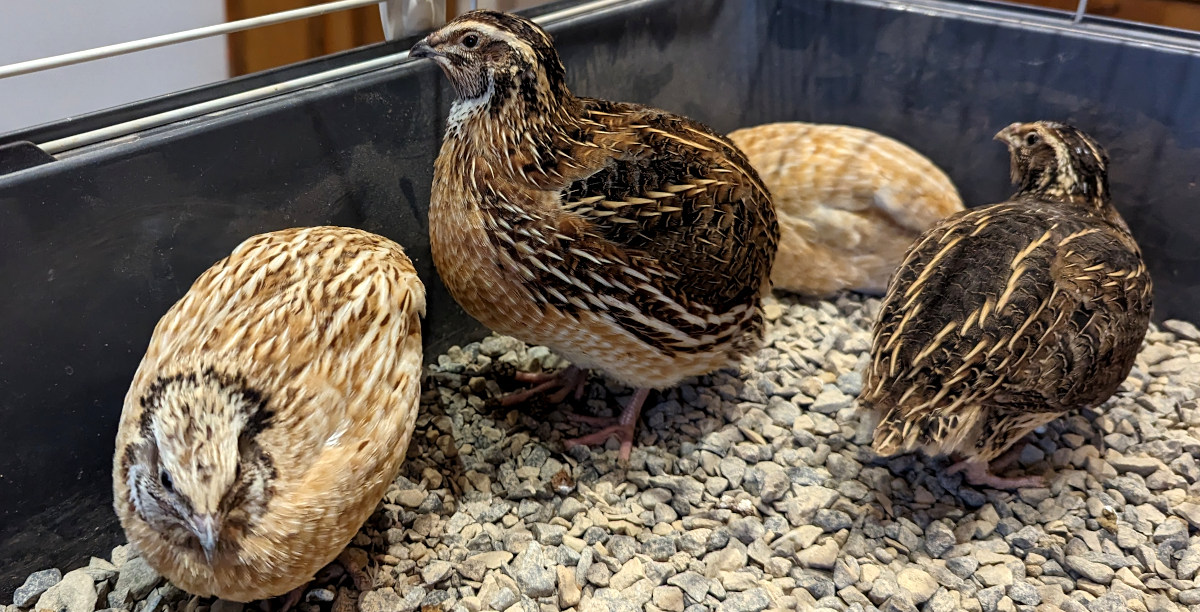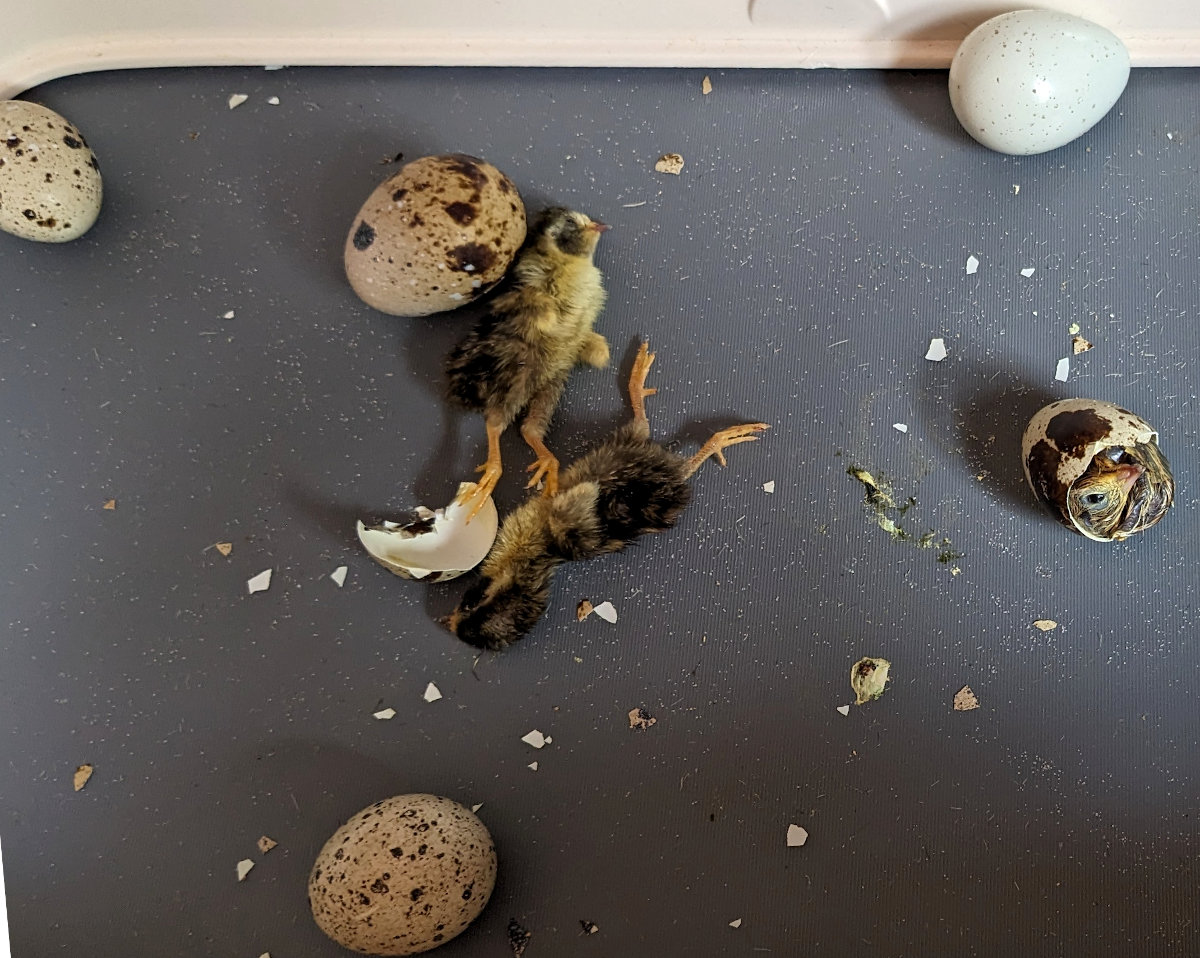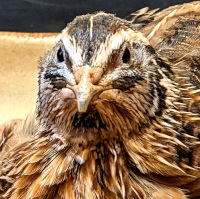Understanding quail behaviour. The social dynamics of the flock and the signs of trouble.

The world of quails may seem like a flurry of feathers and chirps, but beneath the surface lies a complex social structure and fascinating communication system.
Table of Contents
By understanding quail behaviour, we can better care for their needs and anticipate potential problems.
Within a covey, a pecking order exists. This hierarchy determines access to food, mates, and prime nesting spots. Observe your quails to identify the dominant and submissive individuals. Minor squabbles are common, but persistent aggression or exclusion of certain birds could indicate a problem.
Let's crack the code and become fluent in the language of quails!
1. Social Hierarchy in Quail: Quail are known for their hierarchical social structure. Within a flock, there is often a distinct pecking order. Dominant quail assert their authority over others, and understanding this hierarchy is crucial for managing the flock harmoniously.
2. Signs of Aggression: Aggression among quail is not uncommon, especially during the establishment of a pecking order. Watch for aggressive behaviours such as pecking, chasing, or cornering. Occasional squabbles are normal, but constant aggression may require intervention, such as separating the aggressor.
3. Egg-Laying and Brooding Behaviour: Female quail may exhibit distinct behaviours when laying and brooding. Understanding these behaviours helps in creating suitable conditions for successful breeding. Look for nesting behaviours, and provide adequate nesting patches for their comfort.
Below: Poor fertility and hatch rates or lower than expected numbers of eggs can indicate a problem with the flock dynamic.

Quail exhibit a fascinating gender equality. Both males and females participate in raising young, sharing incubation and chick care duties. However, males are typically the more vocal and territorial ones, displaying elaborate courtship rituals to attract mates.
4. Socialising and Foraging: Quail are social birds that thrive on interaction. Observe their communal foraging activities and socialising behaviours. Healthy quail flocks engage in activities such as dust bathing and scratching together, promoting a sense of community.
5. Alarm Calls and Communication: Quail communicate through various vocalisations, including alarm calls.
Below: Familiarise yourself with their vocal cues to discern between normal communication and signs of distress.
Sudden changes in vocal patterns may indicate a problem.
6. Isolation and Withdrawal: Pay attention to any quail that isolates itself from the flock. Withdrawal or persistent hiding may signal stress, illness, or bullying. Isolated quail may be vulnerable to attacks from others, so prompt investigation is essential.
7. Feather Condition: The condition of quail feathers can offer insights into their well-being.
Below: Healthy quail typically have smooth and well-groomed feathers.
Feather loss, especially around the neck and back, may indicate aggressive pecking or health issues.
8. Stress-Induced Behaviors: Stress in quail can manifest in various ways, including increased vocalization, erratic movement, and changes in eating habits. Identifying and addressing stressors promptly is crucial to maintaining a healthy flock.
9. Nesting and Brooding Rituals: Understanding the natural nesting and brooding instincts of quail aids in creating suitable conditions for successful breeding. Provide appropriate nesting materials, and observe their behaviors during the breeding season.
10. Introducing New Quail to the Flock: When introducing new quail to an existing flock, observe for initial signs of aggression or isolation. Gradual introductions and providing hiding spots can ease the integration process.
11. Regular Monitoring and Interaction: Regular observation is key to understanding your quail's behaviour. Spend time observing their activities, and handle them gently to build trust. Recognising normal behaviours makes it easier to identify abnormalities.
Quails are highly social creatures. They live in cohesive groups called coveys, typically consisting of 10-20 individuals. Within these coveys, a distinct pecking order emerges, with dominant birds leading the flock and young chicks learning important social cues.
Dust bathing isn't just about hygiene for quails. It's also a social activity and a way to regulate body temperature. Observing their dust-bathing rituals can reveal social interactions and potential hierarchies within the flock.
Signs of Trouble:
- Feather Ruffling and Aggressiveness: Excessive feather ruffling, pecking, and chasing often indicate dominance battles or stress within the flock. Monitor these behaviours to prevent injuries and intervene if necessary.
- Reproductive Issues: Difficulty laying eggs, abandoned nests, or poor chick survival could point to nutritional deficiencies, unsuitable nesting conditions, or compatibility issues among breeding pairs. Monitor the situation closely and adjust your setup or breeding practices as needed.
- Sudden Changes in Behaviour: Loss of appetite, lethargy, hiding excessively, or unusual vocalizations could be signs of illness, stress, or even predator presence. Investigate the cause and provide appropriate care or adjustments to the environment.
- Excessive Aggression: If you witness persistent fighting, feather pulling, or chasing of specific birds, it could indicate a dominance issue or bullying. Address this by rearranging the coop, providing more hiding spots, or even separating the aggressor.
- Mopey Quails and Lethargy: A normally active quail suddenly becoming withdrawn and inactive could be a sign of illness, injury, or depression. Promptly isolate such birds and seek veterinary advice.
- Unusual Vocalisations: Harsh alarm calls or frantic whistling could indicate a perceived threat, such as a predator or unfamiliar object. Be sensitive to such alerts and investigate the cause to ensure your quails' safety.
Making sure things stay happy in the covey:
Every flock is unique, and their behaviour will vary based on individual personalities, breed differences, and environmental factors.
By observing your quails' interactions, vocalisations, and body language, you can become attuned to their subtle cues. This awareness allows you to:
- Maintain a Stable Environment: Avoid unnecessary changes to the coop layout or routine, as this can create anxiety within the flock.
- Identify Potential Conflicts: Early intervention in dominance disputes can prevent injuries and stress.
- Provide Supportive Care: Address potential health issues promptly and offer a calm, enriched environment for recovering birds.
Remember, understanding quail behaviour is an ongoing journey. By observing your unique flock with patience and empathy, you can become their trusted interpreter, ensuring their well-being and creating a harmonious haven for your feathered friends.
